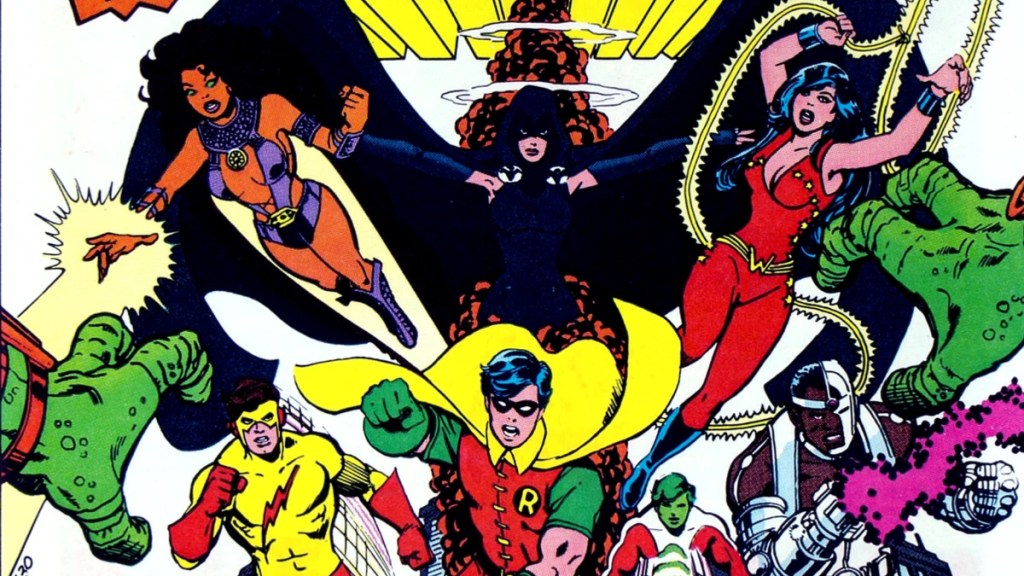DC Comics‘ history has always been one of peaks and valleys. DC helped create the superhero as fans know it, and revitalized the medium in the 1956 with Showcase #4, which kicked off the Silver Age of Comics. However, the rise of Marvel in 1961, coming back to the superhero game after years of doing monster, romance, and Western comics, saw the publisher fall to the wayside. Since then, the publisher has become the solid number two, despite putting out many of the most critically acclaimed comics ever, like Watchmen and The Dark Knight Returns. These wouldn’t come until the 1980s, after the infamous DC Implosion.
The 1970s were an interesting time for DC Comics. Jack Kirby, one half of the brain trust that had made Marvel into a juggernaut, had come to DC and created the Fourth World mythos before returning to Marvel. The publisher was watching Marvel get bigger and bigger, and they need to do something to make them competitive with the House of Ideas. In 1978, the publisher began to advertise a massive expansion, one that was hoped to staunch the bleeding and make the company the top of the comic industry again. This led to the DC Explosion.
Videos by ComicBook.com
The DC Explosion Was Ambitious but Led to the Implosion

The DC Explosion began with a massive marketing campaign. DC’s plan was ambitious and it was one meant to mirror what Marvel was doing at the time. Marvel found success by expanding its publishing slate and DC thought that if they did the same, they would also find success. The advertising touted many new books, which would have increased page counts and higher cover prices. New series like Firestorm and Steel: The Indestructible Man debuted, and books like Vixen were announced, and the publisher went all in on building hype. In June of 1978, the Explosion began and DC sat back and waited for the money to roll in.
However, the exact opposite happened. The increased cover prices hurt the books, and the new comics didn’t appeal to readers. Another massive problem that affected the DC Explosion were the North American blizzards of 1977 and 1978. This affected titles getting to newsstands. The late ’70s were also a terrible time economically in the US, which had a huge impact on the entire comic industry. DC picked the wrong time to raise their prices and flood the market with new titles and soon the Explosion became the DC Implosion. The publisher ended up cancelling 17 titles because of the Implosion, both new books and longtime DC titles like Showcase, All-Star Comics, Our Fighting Forces, and most of DC’s classic horror titles. 14 additional titles were also cancelled in 1978, with even DC stalwart Detective Comics almost put on the chopping block. The company laid off many employees and when the dust settled had cancelled about 40% of its line.
The DC Implosion Lit a Fire Under the Publisher

The DC Implosion was a massive disaster for the publisher. The publisher was trying to retake its place at the top of the comic industry, but ended up almost dying. The DC Explosion began in June of 1978 and by August, the cuts began. This type of failure was unprecedented, and would go down as one of the most terrible things to ever happen to a major comic company. Even the failures of the 1990s couldn’t hold a candle to the DC Implosion. However, the DC Implosion would soon be forgotten as the success of Superman made the company a big name with the general public. DC was hot again and 1980 would see them put out a series that would allow them to compete with Marvel again — New Teen Titans, Marv Wolfman and George Perez’s classic series.
The 1980s would see DC become a titan again, the days of the Implosion long behind them. The lessons of the DC Implosion — not to over stress the market by releasing a massive slate of titles — were taken to heart. DC went for quality over quantity, investing in talent and beginning the British Invasion by bringing over talent like Alan Moore, Dave Gibbons, and Brian Bolland. This would lead to the emergence of the Vertigo line, allowing DC to take their place as the home of prestige comics. The DC Implosion had the reverse effect that it was supposed to have, but also taught the publisher lessons that would allow it to make comics into a valid artform.

